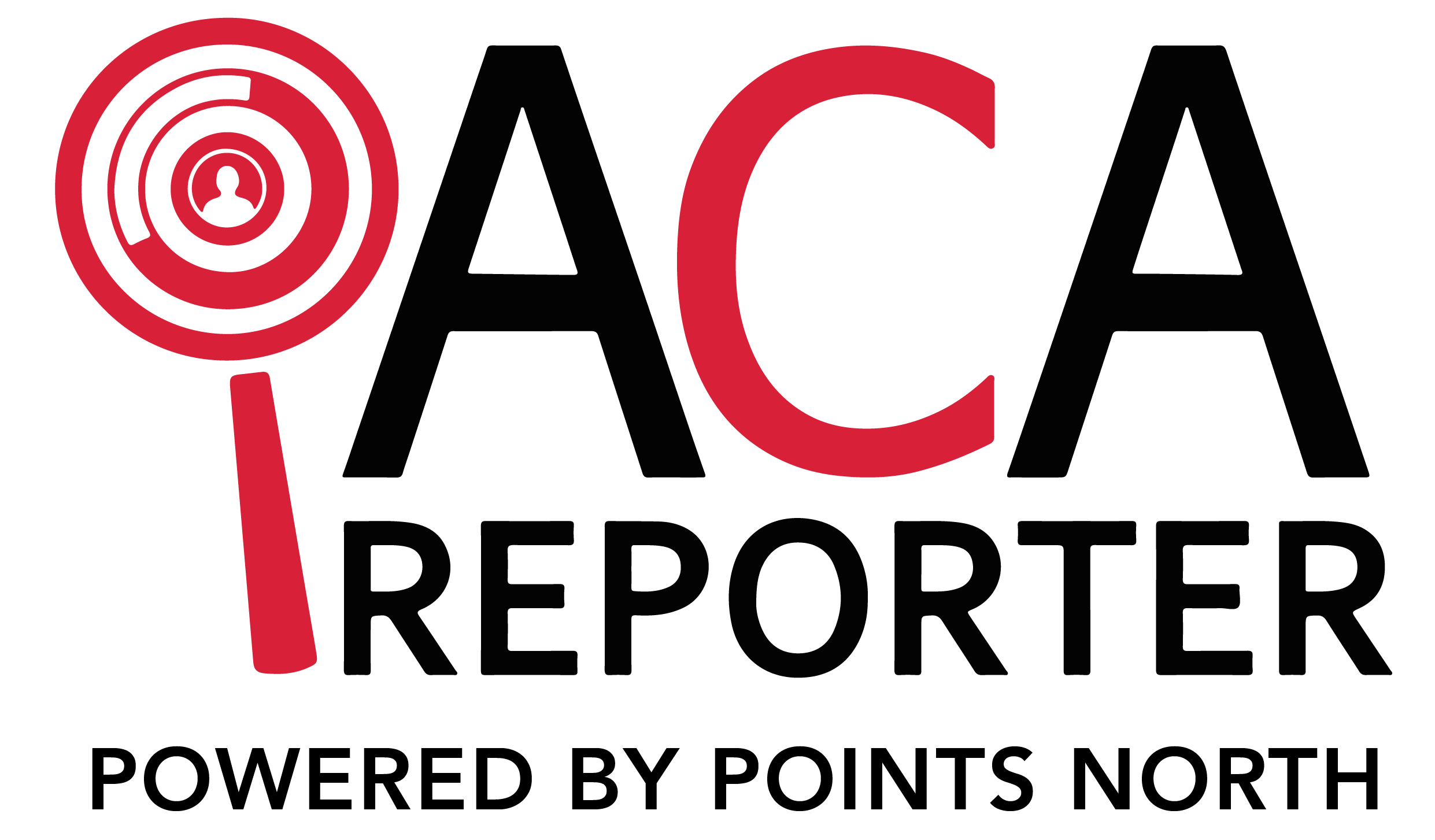Understanding if and when variable hour employees qualify for benefits under payroll systems simply weren't designed to handle. From multi-location reporting to age-banded premium calculations, the unique needs of your diverse client portfolio demands specialized ACA reporting software that goes beyond basic compliance modules.
While payroll providers promise comprehensive ACA solutions, the reality is far different when you're managing clients with sophisticated benefit structures, multiple locations, and/or variable-hour workforces. These compliance gaps don't just create administrative headaches, they expose your clients to costly IRS penalties and put your professional reputation at risk.
In this guide, we'll explore the four most challenging ACA compliance hurdles that benefits brokers encounter and reveal how the right software solutions can transform these pain points into competitive advantages.
The Growing Complexity of ACA Compliance for HR
The consequences of inadequate compliance tools extend beyond administrative frustration. IRS penalties for ACA violations can reach thousands of dollars per employee, and audit responses become exponentially more difficult without proper documentation and reporting systems. For benefits brokers, these failures reflect directly on your expertise and can damage long-term client relationships.
ACA HR compliance has evolved far beyond the basic employer mandate requirements that most payroll systems address. Today's benefits professionals must navigate an intricate web of regulations that vary by industry, employee classification, and organizational structure.
Traditional payroll solutions excel at standard scenarios: full-time employees with consistent hours receiving uniform benefit offerings. However, they struggle when faced with the complex realities of modern workplaces. Multi-location franchises, variable-hour employees, and sophisticated benefit plan designs require specialized tracking and reporting capabilities that many systems can't provide.
Top 4 ACA Compliance Hurdles for Benefits Brokers
.png?width=938&height=391&name=How%20ACA%20Reporter%20Transforms%20Benefits%20Brokers%20Compliance%20(1).png)
Hurdle #1: Level-Funded Plan Data Gathering Complexities
Level-funded health plans create significant ACA data gathering challenges that expose the limitations of traditional payroll systems. Unlike fully-insured plans with standardized data feeds, level-funded arrangements require benefits brokers to collect and consolidate information from multiple disparate sources to ensure accurate ACA compliance reporting.
Level-funded plan data gathering obstacles include:
- Fragmented data sources across third-party administrators, stop-loss carriers, and direct provider arrangements
- Inconsistent data formats that require manual manipulation and standardization before ACA calculations
- Timing mismatches between when coverage costs are determined and when ACA reporting deadlines require finalized data
- Missing employee-level details that are essential for accurate affordability and minimum value determinations
The complexity intensifies when level-funded clients work with multiple vendors who each maintain different data systems and reporting schedules. Payroll systems expect clean, standardized benefit data inputs, but level-funded arrangements rarely provide information in compatible formats.
Benefits brokers managing level-funded clients often find themselves manually piecing together incomplete data from various sources while racing against compliance deadlines. This data gathering burden becomes exponentially more challenging as client portfolios grow and each level-funded arrangement involves different vendor combinations.
ACA Reporter streamlines level-funded data management through flexible import capabilities that can accommodate diverse data formats and sources. The system provides tools to standardize and validate information from multiple vendors, ensuring accurate compliance calculations regardless of the underlying data complexity.
Hurdle #2: ICHRA Administration Complexities
Individual Coverage Health Reimbursement Arrangements (ICHRA) represent one of the most complex ACA compliance scenarios that benefits brokers encounter. These arrangements require intricate tracking of reimbursement amounts, affordability calculations, and employee class determinations that challenge even sophisticated compliance systems.
ICHRA compliance intricacies that create reporting nightmares:
- Employee class management across different reimbursement amounts and eligibility criteria
- Affordability determinations that vary by geographic location and family composition
- Integration challenges between ICHRA administration platforms and ACA reporting systems
- Documentation requirements for employee opt-out decisions and alternative coverage elections
Explore our ICHRA compliance guide.
The geographic variability of ICHRA affordability calculations creates particular challenges for multi-location employers. ACA filing requirements for employers with ICHRA arrangements demand precise location-based calculations that account for local individual market premium costs.
Traditional payroll systems lack the sophisticated geographic tracking and calculation capabilities necessary for ICHRA compliance. They can't properly integrate with ICHRA administration platforms or maintain the detailed documentation required for audit support.
Benefits brokers working with ICHRA clients need specialized tools that can manage complex reimbursement arrangements while maintaining precise ACA compliance tracking. The administrative burden of manual ICHRA compliance management quickly becomes overwhelming as client portfolios grow.
Hurdle #3: Age-Banded Premium Calculations
Age-banded premium structures create some of the most technically challenging ACA compliance scenarios that benefits brokers face. These pricing models require sophisticated calculations that account for age-related premium variations while maintaining accurate affordability determinations across diverse employee populations.
Age-banded calculation complexities include:
- Individual age-based premium determinations that change throughout measurement periods
- Safe harbor applications that require precise age-based affordability percentages
- Geographic variations that compound age-based calculations with location-specific factors
Payroll systems typically use simplified premium calculation methods that can't accommodate the nuanced requirements of age-banded structures. They lack the computational sophistication necessary to maintain accurate affordability tracking when premiums fluctuate based on individual employee ages.
Benefits brokers managing clients with age-banded premium structures need calculation tools that can handle complex mathematical requirements while maintaining compliance accuracy. Manual age-banded calculations become error-prone and time-intensive as employee populations grow.
Struggling with complex ACA compliance scenarios? Discover how ACA Reporter specifically addresses benefits broker challenges →
Hurdle #4: Multi-Location Reporting Coordination
Multi-location organizations present coordination challenges that test the limits of traditional compliance systems. Employee benefits brokers working with franchise operations, retail chains, or distributed service organizations must manage complex aggregation requirements while maintaining location-specific tracking capabilities.
Multi-location compliance obstacles include:
- Controlled group determinations that affect aggregation requirements across related entities
- State-specific compliance variations that create different reporting obligations by location
- Payroll system fragmentation where different locations use different providers or configurations
- Employee transfer tracking that maintains compliance continuity across location changes
The aggregation requirements for multi-location employers create particular complexity when employees work across different sites or transfer between locations during measurement periods. Standard payroll systems struggle to maintain unified tracking while accommodating location-specific variables.
Cross-location hour aggregation becomes especially challenging when dealing with franchise arrangements where individual locations may operate semi-independently while remaining part of a larger controlled group for ACA purposes. Benefits brokers need tools that can manage these complex organizational relationships while ensuring accurate compliance calculations.
ACA Reporter provides centralized coordination capabilities that streamline multi-location compliance management. The system maintains location-specific tracking while ensuring proper aggregation and unified reporting across complex organizational structures.
Why Traditional Payroll Systems Fall Short
The fundamental limitation of traditional payroll ACA modules lies in their design assumptions. These systems were built to handle straightforward compliance scenarios with standard employee classifications and uniform benefit offerings. When faced with the complex realities of modern benefit plan designs, they quickly reach their operational limits.
Critical limitations of payroll-based ACA compliance:
- Rigid plan configuration options that can't accommodate sophisticated benefit structures
- Inflexible reporting formats that don't support complex organizational requirements
- Inadequate audit trail documentation that complicates IRS inquiry responses
The cost of compliance failures far exceeds the investment in specialized ACA reporting software. IRS penalties for ACA violations can reach thousands per employee for failure to offer coverage and only increases for inadequate coverage offerings. These penalty amounts make the business case for proper compliance tools compelling.
Benefits brokers who rely on inadequate compliance tools risk not only client penalties but also professional liability exposure. When compliance failures occur due to system limitations, the responsibility often falls back on the benefits professional who recommended the inadequate solution.
Choosing the Right ACA Compliance Solution
When evaluating ACA reporting software options, benefits brokers should prioritize solutions that address the specific complexities of their client portfolios. Generic compliance tools may appear cost-effective initially, but they create long-term risks and administrative burdens that outweigh any short-term savings.
Essential features for benefits broker ACA compliance tools:
Technical Capabilities
- Multi-plan configuration support for complex benefit structures
- Advanced calculation engines that handle age-banded and variable premium scenarios
- Robust integration options with diverse payroll and benefit administration systems
- Comprehensive audit trail maintenance for IRS inquiry support
Operational Efficiency
- Centralized client management across diverse organizational structures
- Automated compliance monitoring that identifies potential issues before they become problems
- Streamlined reporting processes that eliminate manual data manipulation
- Expert support access for complex compliance questions and scenarios
The return on investment for specialized ACA compliance software extends beyond penalty avoidance. Proper tools enable benefits brokers to expand their service offerings, take on more complex clients, and operate more efficiently. This operational improvement creates competitive advantages that justify the technology investment.
Transform ACA Compliance Challenges Into Competitive Advantages

The fourACA compliance hurdles we've explored; MEC-only client management, level-funded plan compliance, ICHRA administration, age-banded premium calculations, and multi-location coordination, don't have to limit your practice's growth potential. While traditional payroll systems leave benefits brokers struggling with manual workarounds and compliance gaps, the right ACA reporting software transforms these challenges into opportunities to serve more sophisticated clients and expand your service offerings.
The solution lies in partnering with specialized compliance providers who understand that benefits brokers need more than basic ACA modules. ACA Reporter was specifically designed to handle the complex scenarios that define modern benefits practice, giving you the confidence to take on challenging clients while ensuring reliable compliance across your entire portfolio.
Ready to eliminate ACA compliance hurdles from your practice? Learn how ACA Reporter specifically addresses the challenges benefits brokers face every day. Our specialized platform handles the complex scenarios that traditional systems can't, giving you the confidence to take on sophisticated clients while ensuring reliable compliance for your entire portfolio.
Want to see how ACA Reporter handles your specific client challenges? Schedule a personalized demo to explore solutions tailored to your benefits broker practice.





.png)